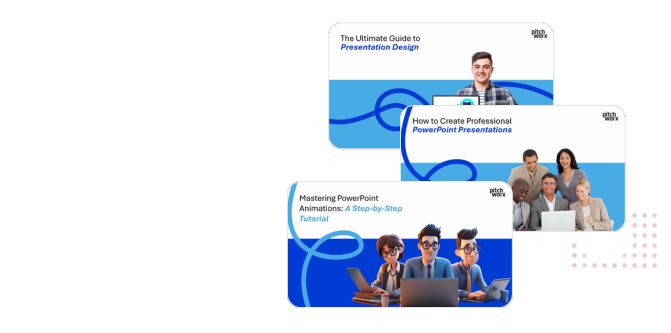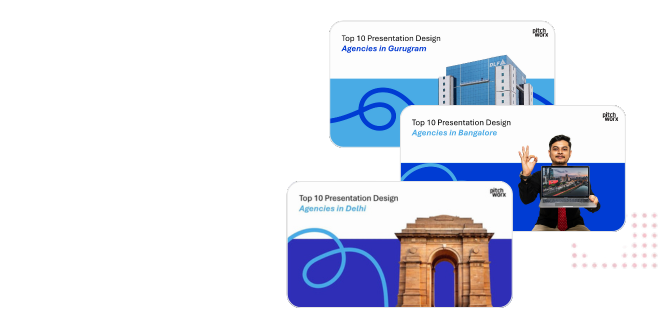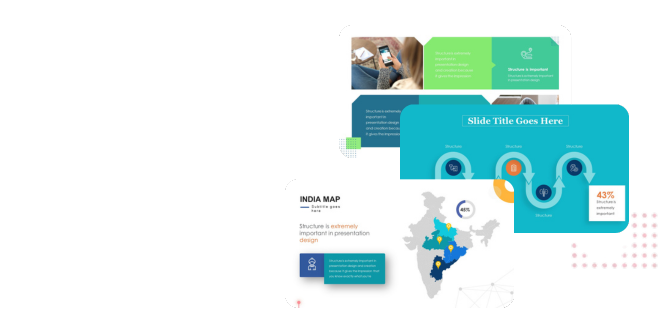
The Golden Rules of Presentation Design: Your Guide to Creating Compelling Presentations
Understanding the Foundation: Why Presentation Design Matters
Rule #1: Know Your Audience - The Cornerstone of Effective Design
How to Apply Audience-Centric Design:
- Research your audience’s industry background
- Identify their key challenges and interests
- Adjust your technical language accordingly
- Consider cultural nuances and preferences
At PitchWorx, we begin every project with comprehensive audience analysis. For instance, when working with a tech startup pitching to venture capitalists, we focus on data-driven slides with clear metrics and growth projections. Conversely, for a consumer product presentation, we emphasize visual storytelling and emotional connection.
Rule #2: Embrace Simplicity - Less Is More
Key Elements of Simple Design:
- One key message per slide
- Ample white space
- Limited color palette (3-4 colors maximum)
- Readable fonts (stick to 2-3 font families)
- Clear hierarchy of information
Rule #3: Master the Art of Visual Communication
Effective Visual Elements Include:
- High-quality images and graphics
- Informative charts and diagrams
- Custom icons and illustrations
- Meaningful infographics
- Brand-consistent design elements
Best Practices for Visual Implementation:
- Use high-resolution images
- Maintain consistent style across all visuals
- Ensure visuals support rather than distract from your message
- Consider color psychology in your design choices
- Use data visualization to simplify complex information
Rule #4: Maintain Brand Consistency
Essential Elements of Brand Consistency:
- Color schemes that align with brand guidelines
- Consistent typography throughout
- Proper logo usage and placement
- Brand-appropriate imagery
- Consistent design elements and styles
PitchWorx's Approach to Branding:
We develop comprehensive presentation templates that incorporate our clients’ brand guidelines while maintaining flexibility for different content types. This approach ensures consistency while allowing for creative expression within established parameters.
Rule #5: Master the Art of Storytelling
Elements of Effective Presentation Storytelling:
- Clear beginning, middle, and end
- Emotional connection points
- Logical flow between concepts
- Strategic use of tension and resolution
- Memorable key takeaways
Story Structure Framework:
- Opening Hook: Capture attention with a compelling statement or question
- Context: Set the scene and establish relevance
- Challenge: Present the problem or opportunity
- Journey: Detail the solution or approach
- Resolution: Share outcomes and benefits
- Call to Action: Guide audience toward next steps
Rule #6: Design for Engagement
Engagement Strategies:
- Interactive elements
- Question slides
- Audience participation prompts
- Multimedia integration
- Strategic pause points
PitchWorx's Engagement Techniques:
Rule #7: Perfect Through Practice and Feedback
Practice Guidelines:
- Rehearse with the actual slides
- Time your presentation
- Record yourself presenting
- Practice with different audiences
- Gather and incorporate feedback
PitchWorx's Quality Assurance Process:
The Technical Side: Design Tools and Resources
Essential Design Tools:
- Professional presentation software (PowerPoint, Keynote, Google Slides)
- Image editing software
- Vector graphics tools
- Color palette generators
- Font management systems
Bringing It All Together: The PitchWorx Advantage
Our Process:
- Initial Consultation: Understanding your needs and audience
- Strategy Development: Crafting the perfect approach
- Design Creation: Bringing your vision to life
- Refinement: Perfecting every detail
- Delivery: Ensuring flawless execution
Conclusion: Excellence in Presentation Design
Frequently Asked Questions About Presentation Design
A truly effective presentation design combines clear visual hierarchy, purposeful use of white space, and compelling visuals that support your message. The key is maintaining simplicity while ensuring your content tells a cohesive story. At PitchWorx, we’ve found that presentations converting the best typically follow the 10-20-30 rule: no more than 10 slides, lasting 20 minutes, with no font smaller than 30 points.
Q2: How many slides should a good presentation have?
The ideal number of slides depends on your presentation’s duration and complexity. However, a good rule of thumb is: 15-minute presentation: 7-10 slides 30-minute presentation: 15-20 slides 60-minute presentation: 25-30 slides Remember, quality trumps quantity. Each slide should serve a specific purpose in your narrative.
Overcrowding slides with text Using inconsistent branding elements Choosing hard-to-read fonts Relying too heavily on animation effects Using low-quality images Having no clear visual hierarchy Ignoring color contrast principles.
While templates can provide a good starting point, custom designs often yield better results, especially for important presentations. Custom designs allow you to: Align perfectly with your brand guidelines Address your specific content needs Stand out from competitor presentations Create unique visual elements that support your message.
To boost engagement: Use interactive elements Incorporate relevant data visualizations Add strategic pause points Include compelling imagery Use storytelling techniques Implement consistent visual themes Create memorable moments through design.
Professional presentations typically work best with: 2-3 primary colors from your brand palette 1-2 accent colors for emphasis Sufficient contrast for readability Consistent color usage throughout Colors that evoke the right emotional response.
To ensure cross-device compatibility: Use standard fonts Test on multiple devices Keep important content away from edges Ensure sufficient text size Use high-resolution images Check color contrast Create backup PDF versions.
Professional presentation design typically requires: Research and planning: 2-3 hours Initial design concept: 3-4 hours Content layout: 4-6 hours Refinement and review: 2-3 hours However, complex presentations may require significantly more time to achieve optimal results.
Professional designers typically use: PowerPoint (Professional version) Adobe Creative Suite Canva Pro Figma Sketch Custom design tools The key is not just the tools, but how effectively you use them to achieve your design goals.
Measure presentation success through: Audience engagement metrics Feedback surveys Conversion rates Information retention Action item completion Follow-up requests Social media shares
Additional Resources
- Download our presentation design checklist
- Browse our portfolio of successful projects
- Follow us on social media for daily inspiration
PitchWorx is the best presentation design agency specializing in creating compelling, professional presentations for businesses of all sizes. Our team of expert designers combines creativity with strategic thinking to deliver presentations that drive results.









